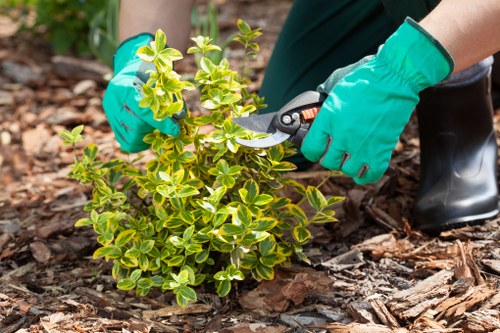Spring Cleaning in Upholstery Cleaner
Why Spring Cleaning Your Upholstery is Important

As the seasons shift and spring arrives, it’s the perfect time to refresh your home with a thorough spring cleaning. One area that often gets overlooked but is essential for maintaining a healthy living environment is your upholstery. Upholstery, whether it’s your favorite sofa, armchair, or dining chairs, can harbor dust, allergens, and stains that accumulate over time.
Regular cleaning not only enhances the appearance of your furniture but also extends its lifespan. Spring cleaning your upholstery helps eliminate hidden dirt and grime that regular vacuuming might miss, ensuring a fresher and more inviting home.
Moreover, clean upholstery contributes to better indoor air quality, reducing potential allergens that can affect your health. Investing time and effort into upholstery cleaning this spring can make a significant difference in the overall comfort and aesthetic of your home.
Understanding Upholstery Fabric

Before diving into the cleaning process, it’s crucial to understand the type of fabric your upholstery is made from. Different fabrics require different cleaning techniques and products to avoid damage. Common upholstery materials include:
- Cotton: Durable and natural, but can be prone to staining.
- Leather: Luxurious and easy to clean, yet susceptible to scratches.
- Microfiber: Resistant to stains and easy to maintain.
- Silk: Elegant but delicate, requiring gentle cleaning methods.
- Polyester: Durable and resistant to wrinkles and shrinking.
Identifying the fabric type will help you choose the appropriate cleaning solution and method, ensuring effective results without compromising the integrity of your upholstery.
Preparing for Upholstery Cleaning

Preparation is key to successful upholstery cleaning. Start by removing any loose debris and cushions from your furniture. Vacuum thoroughly using an upholstery attachment to eliminate dust, crumbs, and pet hair. Pay special attention to crevices and seams where dirt can accumulate.
Next, perform a fabric test by applying a small amount of your chosen cleaning solution to an inconspicuous area. This ensures that the fabric won’t react adversely, preventing potential discoloration or damage.
Gather all necessary cleaning supplies, including a suitable upholstery cleaner, soft brushes, clean cloths, and protective gloves. Having everything ready will streamline the cleaning process and help you achieve the best possible results.
Effective Cleaning Techniques

Spot Cleaning Stains
Addressing stains promptly is crucial for successful upholstery cleaning. Start by blotting the stain with a clean, dry cloth to absorb as much of the spill as possible. Avoid rubbing, as this can spread the stain and embed it deeper into the fabric.
Apply a small amount of upholstery cleaner to the stained area and gently work it in using a soft brush. Allow the solution to sit for the recommended time, then blot it again with a dry cloth to remove excess moisture. Repeat the process if necessary until the stain is lifted.
Dealing with Pet Stains
Pet stains require special attention due to the proteins and enzymes involved. Use an enzymatic cleaner designed to break down organic matter, effectively eliminating odors and preventing pets from returning to the same spot.
- Blot the area to remove excess moisture.
- Apply the enzymatic cleaner and follow the manufacturer’s instructions.
- Allow the area to air dry completely.
Deep Cleaning Methods

Steam Cleaning
Steam cleaning is an effective method for deep cleaning upholstery. The high-temperature steam penetrates the fabric, dissolving dirt and killing bacteria and allergens. It’s suitable for most fabric types but always check the manufacturer’s guidelines before use.
Benefits of Steam Cleaning
Steam cleaning offers several advantages:
- Sanitization: Kills germs and bacteria without the need for harsh chemicals.
- Deep Penetration: Reaches into the fibers to remove embedded dirt.
- Eco-Friendly: Uses minimal water and chemical cleaners.
Investing in a quality steam cleaner or hiring professional services can ensure optimal results for your upholstery cleaning needs.
Dry Cleaning
For fabrics sensitive to moisture, dry cleaning is an ideal alternative. Dry cleaning involves using specialized solvents that lift stains and dirt without saturating the fabric. This method is particularly effective for delicate materials like silk and suede.
Steps for Dry Cleaning
- Apply the dry cleaning solvent to the stained area.
- Gently agitate the fabric with a soft brush to work in the solvent.
- Allow the solvent to evaporate, then brush the fabric to restore its texture.
Maintaining Clean Upholstery
Regular Maintenance Tips
Preventing dirt and stains from accumulating on your upholstery is much easier than deep cleaning. Implementing regular maintenance habits can keep your furniture looking pristine year-round:
- Vacuum Frequently: Use an upholstery attachment to remove dust and debris.
- Use Slipcovers: Protect your furniture from spills and stains with removable covers.
- Avoid Direct Sunlight: Prevent fading by keeping upholstery away from intense sunlight.
- Rotate Cushions: Even out wear and tear by rotating cushions regularly.
- Address Spills Immediately: Blot spills quickly to prevent stains from setting.
Choosing the Right Products
Selecting appropriate cleaning products is essential for maintaining the integrity of your upholstery. Opt for cleaners that are specifically designed for your fabric type and free from harsh chemicals that can cause damage.
Additionally, consider eco-friendly and non-toxic options to ensure a safe environment for your family and pets while effectively cleaning your furniture.
When to Hire Professional Upholstery Cleaners
Signs You Need Professional Help
While regular maintenance can keep your upholstery in good condition, there are times when professional cleaning is necessary. Consider hiring experts if you encounter:
- Persistent Stains: Tough stains that resist home cleaning efforts.
- Allergy Symptoms: Persistent allergy issues despite regular cleaning might indicate deep-seated allergens.
- Odor Problems: Lingering or unpleasant odors that standard cleaning can’t eliminate.
- Heavy Use: Furniture that undergoes frequent or heavy use may require professional maintenance to stay in top condition.
Benefits of Professional Cleaning
Professional upholstery cleaners offer several advantages:
- Expertise: Trained technicians understand various fabrics and cleaning techniques.
- Advanced Equipment: Access to industrial-grade cleaning tools and solutions.
- Time-Saving: Professionals can clean your upholstery efficiently, freeing up your time.
- Guaranteed Results: Many services offer satisfaction guarantees and warranties on their work.
Hiring professionals ensures that your upholstery receives the best possible care, preserving its beauty and longevity.
Eco-Friendly Upholstery Cleaning Solutions
Green Cleaning Products
As environmental awareness grows, many homeowners seek eco-friendly upholstery cleaning options. Green cleaning products are formulated without harmful chemicals, making them safer for both your family and the planet.
Benefits of Eco-Friendly Cleaners
Using green cleaning solutions offers multiple benefits:
- Healthier Home: Reduces exposure to toxic chemicals.
- Environmental Impact: Minimizes pollution and promotes sustainability.
- Safe for Pets: Non-toxic formulas are better for household animals.
- Effective Cleaning: Many green cleaners are just as effective as traditional products.
DIY Green Cleaning Solutions
For those who prefer making their own cleaning solutions, simple ingredients like vinegar, baking soda, and essential oils can be highly effective. For example, a mixture of equal parts white vinegar and water can be used to tackle stains, while baking soda can help eliminate odors.
Upholstery Cleaning Tools and Equipment
Essential Tools for Home Cleaning
Having the right tools can make upholstery cleaning easier and more effective. Some essential tools for home cleaning include:
- Vacuum Cleaner: A high-quality vacuum with an upholstery attachment is essential for removing loose dirt and debris.
- Soft Brushes: Helpful for gently scrubbing stains without damaging the fabric.
- Spray Bottles: Useful for applying cleaning solutions evenly.
- Microfiber Cloths: Ideal for blotting spills and wiping surfaces clean.
- Steam Cleaner: Provides deep cleaning and sanitization for various fabrics.
Advanced Cleaning Equipment
For more intensive cleaning tasks, advanced equipment like rotary cleaners or professional-grade steam machines can be beneficial. These tools offer greater power and efficiency, making them suitable for stubborn stains and high-traffic areas.
Hiring Professional Equipment
If purchasing advanced equipment isn’t feasible, consider renting or hiring professional services that utilize such tools. This ensures your upholstery receives a comprehensive clean without the investment in expensive machinery.
Preventive Measures to Protect Your Upholstery
Using Protective Covers
Protective covers are an excellent way to shield your upholstery from spills, stains, and everyday wear and tear. Slipcovers are available in various materials and styles, allowing you to change the look of your furniture while providing an extra layer of protection.
Implementing Proper Usage Habits
Encouraging good habits can significantly extend the life of your upholstery:
- Remove Shoes: Asking guests to remove their shoes can reduce dirt and debris on your furniture.
- Use Coasters: Prevent drink stains by using coasters on tables and nearby furniture.
- Handle Spills Immediately: Quickly addressing spills minimizes the chance of permanent stains.
- Avoid Sharp Objects: Keep items like keys and jewelry away from cushions to prevent snags and tears.
Regular Inspections
Periodically inspect your upholstery for signs of wear, tear, or damage. Early detection allows for timely repairs, preventing minor issues from escalating into major problems.
Choosing the Right Upholstery Cleaner
Types of Upholstery Cleaners
The market offers a wide range of upholstery cleaners, each designed for specific needs. Understanding the different types can help you select the most effective product for your situation:
- Foam Cleaners: Ideal for light cleaning and spot treatments, foam cleaners are easy to apply and quick to dry.
- Shampoo Cleaners: Suitable for deep cleaning, shampoo cleaners penetrate the fabric to remove embedded dirt.
- Steam Cleaners: Provide a chemical-free cleaning method, utilizing high-temperature steam to sanitize upholstery.
- Enzymatic Cleaners: Effective for removing organic stains like pet accidents, enzymatic cleaners break down proteins and eliminate odors.
- Dry Powder Cleaners: Simple to use, these cleaners are sprinkled on the fabric, agitated, and then vacuumed away.
Choosing Based on Fabric Type
Select a cleaner that matches your upholstery’s fabric type to ensure the best results without causing damage. Always refer to the manufacturer’s cleaning instructions and perform a patch test before applying any new product.
Eco-Friendly Options
For environmentally conscious consumers, many upholstery cleaners offer eco-friendly formulations that are biodegradable and free from harmful chemicals. These options provide effective cleaning while minimizing environmental impact.
DIY Upholstery Cleaning Solutions
Homemade Cleaning Recipes
If you prefer creating your own cleaning solutions, there are several effective DIY recipes that use common household ingredients:
- Vinegar and Water Solution: Mix equal parts white vinegar and water to create a natural cleaner that tackles stains and odors.
- Baking Soda Paste: Combine baking soda with water to form a paste that can be applied to stains, left to dry, and then vacuumed off.
- Lemon Juice Cleaner: Mix lemon juice with water for a fresh-smelling cleaner that also acts as a mild bleach for fabric stains.
- Essential Oil Mixtures: Add a few drops of essential oils to your cleaning solutions for added fragrance and antibacterial properties.
Safety Precautions
When using DIY cleaning solutions, always wear protective gloves and ensure proper ventilation. Test the solution on a hidden area of the upholstery to check for any adverse reactions before applying it to larger sections.
Storage and Handling
Store homemade cleaners in clearly labeled containers and keep them out of reach of children and pets. Proper storage ensures that your cleaning solutions remain effective and safe for future use.
Common Upholstery Cleaning Mistakes to Avoid
Avoiding Over-Wetting
One of the most common mistakes in upholstery cleaning is over-wetting the fabric. Excess moisture can lead to mold growth, mildew, and damage to the upholstery structure.
- Use Minimal Water: Apply cleaning solutions sparingly to prevent saturation.
- Dry Properly: Ensure that your upholstery dries completely after cleaning to avoid moisture-related issues.
- Use the Right Tools: Opt for absorbent cloths and allow adequate airflow to speed up the drying process.
Using the Wrong Cleaner
Using an inappropriate cleaner for your upholstery’s fabric type can cause discoloration, weakening of fibers, or other damage. Always verify that the product is suitable for your specific upholstery material.
Rushing the Cleaning Process
Patience is essential in upholstery cleaning. Rushing the process can lead to incomplete cleaning, missed stains, or uneven application of cleaning solutions. Take your time to ensure that each step is performed thoroughly for the best results.
Seasonal Upholstery Care
Spring Maintenance Tips
Spring is an ideal time to perform comprehensive upholstery cleaning as part of your seasonal maintenance routine. In addition to deep cleaning, consider:
- Inspecting for Damage: Look for signs of wear and tear that may need repairs.
- Refreshing Fabric: Use fabric sprays or conditioners to restore softness and eliminate odors.
- Rearranging Furniture: Change the layout to reduce strain on specific areas and promote even wear.
Preparing for Summer
With warmer weather approaching, ensure that your upholstery is ready to withstand increased usage and potential sun exposure. Implement protective measures like window coverings to minimize direct sunlight and prevent fading.
Storing Unused Items
If you have seasonal items like outdoor cushions, take the opportunity to clean and store them properly during spring cleaning. This keeps them in good condition for future use and declutters your living space.
Cost-Effective Upholstery Cleaning
Budget-Friendly Cleaning Tips
Maintaining clean upholstery doesn’t have to break the bank. Implementing cost-effective strategies can help you achieve professional-level results without the high price tag:
- Use Homemade Cleaners: Leverage simple household ingredients for effective cleaning solutions.
- DIY Techniques: Invest time in learning and applying proper cleaning techniques to save on professional services.
- Regular Maintenance: Prevent heavy soiling by maintaining cleanliness, reducing the need for intensive cleaning sessions.
- Repurpose Old Tools: Utilize household items like old toothbrushes for detailed cleaning tasks.
When to Invest in Professional Services
While DIY methods are cost-effective, there are instances where professional services offer better value. For extensive stain removal, deep sanitization, or delicate fabrics, professional cleaners provide expertise and equipment that ensure superior results.
Comparing Costs
Evaluate the cost-effectiveness of professional services versus DIY methods by considering factors like time, effort, and the potential for damage with improper cleaning. In some cases, the long-term benefits of professional cleaning outweigh the initial costs.
Upholstery Cleaning Myths Debunked
Myth: All Upholstery Can Be Cleaned with the Same Method
Different fabrics require different cleaning approaches. Using a one-size-fits-all method can damage certain materials. Always identify your upholstery’s fabric type before selecting a cleaning technique.
Myth: Professional Cleaning is Unnecessary
While regular maintenance is important, professional cleaning offers deep sanitization and stain removal that home methods may not achieve. Professionals also have access to specialized equipment and products for optimal results.
Myth: DIY Cleaners are Less Effective
Many DIY cleaning solutions are just as effective as commercial products when used correctly. However, for persistent stains or delicate fabrics, professional cleaners may provide better outcomes.
Conclusion
Spring cleaning your upholstery is an essential task that enhances the beauty, longevity, and healthiness of your home environment. By understanding your fabric types, utilizing effective cleaning techniques, and maintaining regular upkeep, you can ensure that your furniture remains in top condition year-round.
Whether you choose to tackle the cleaning yourself or hire professionals, investing time in upholstery care will pay off with a fresher, more inviting living space. Don’t wait—book your upholstery cleaning service now to enjoy a spotless and comfortable home this spring.
For expert assistance and top-notch upholstery cleaning solutions, contact us today and transform your home with pristine, well-maintained furniture.